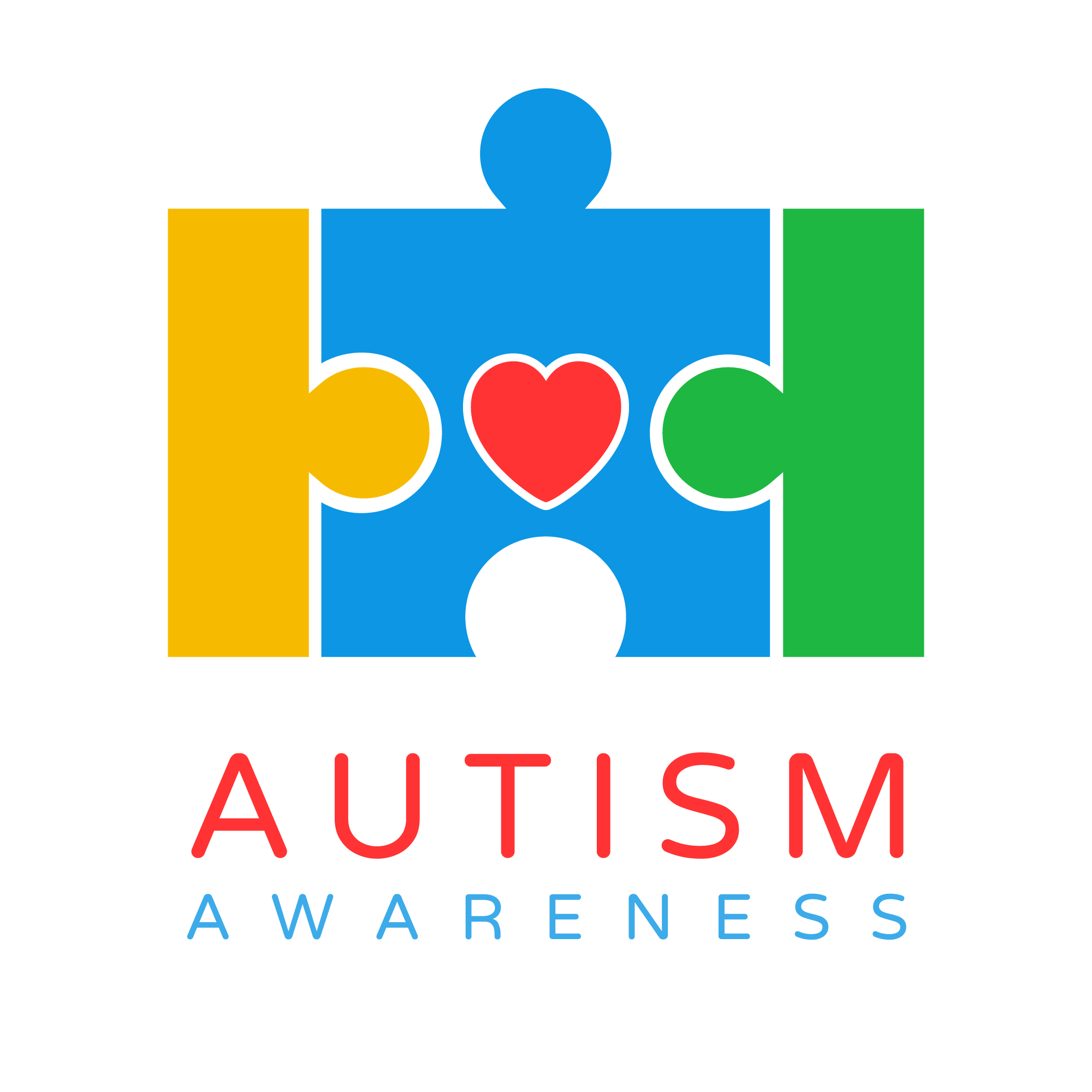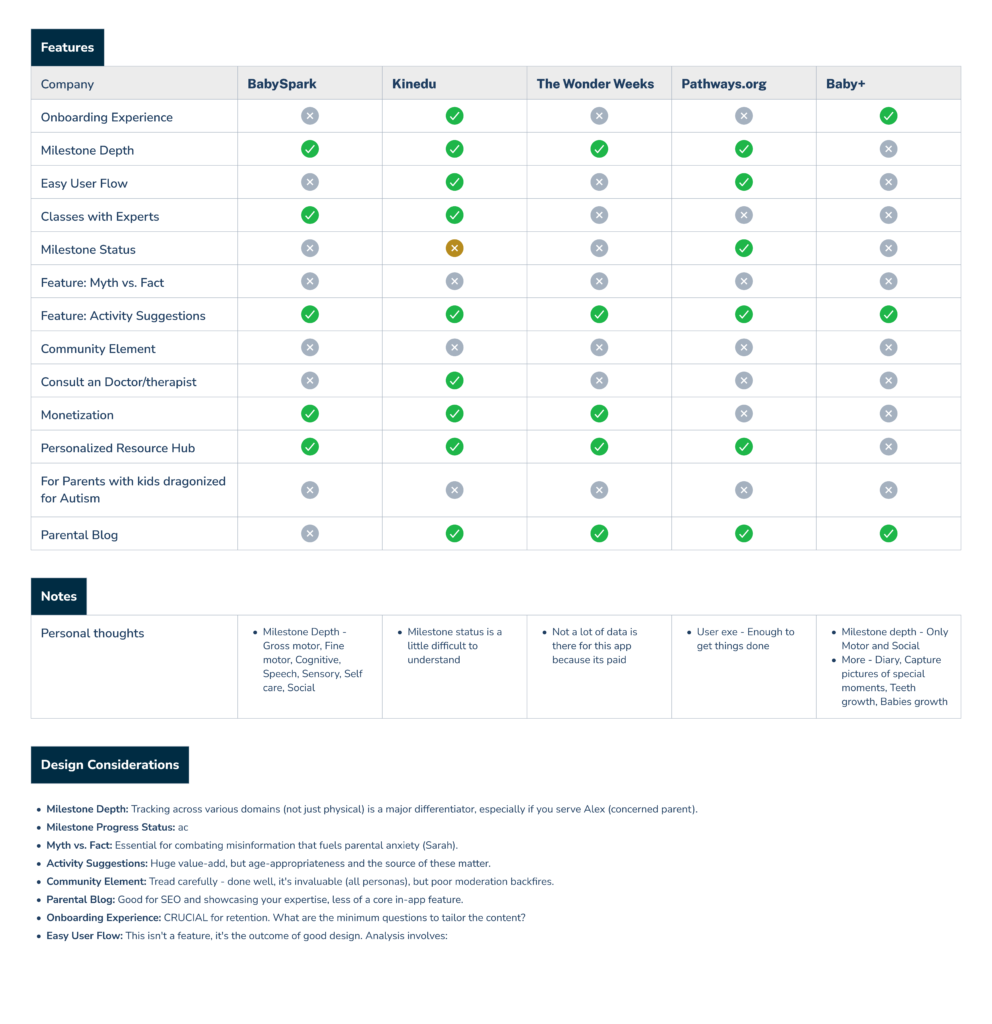Tiny Trails
Transforming Parenting Through User-Centric Design
Designed a mobile app that empowers parents with clear, trustworthy information and intuitive tools to track their children's developmental milestones. By prioritizing user research and a streamlined experience, I aimed to reduce parental anxiety and foster a positive parent-child relationship.
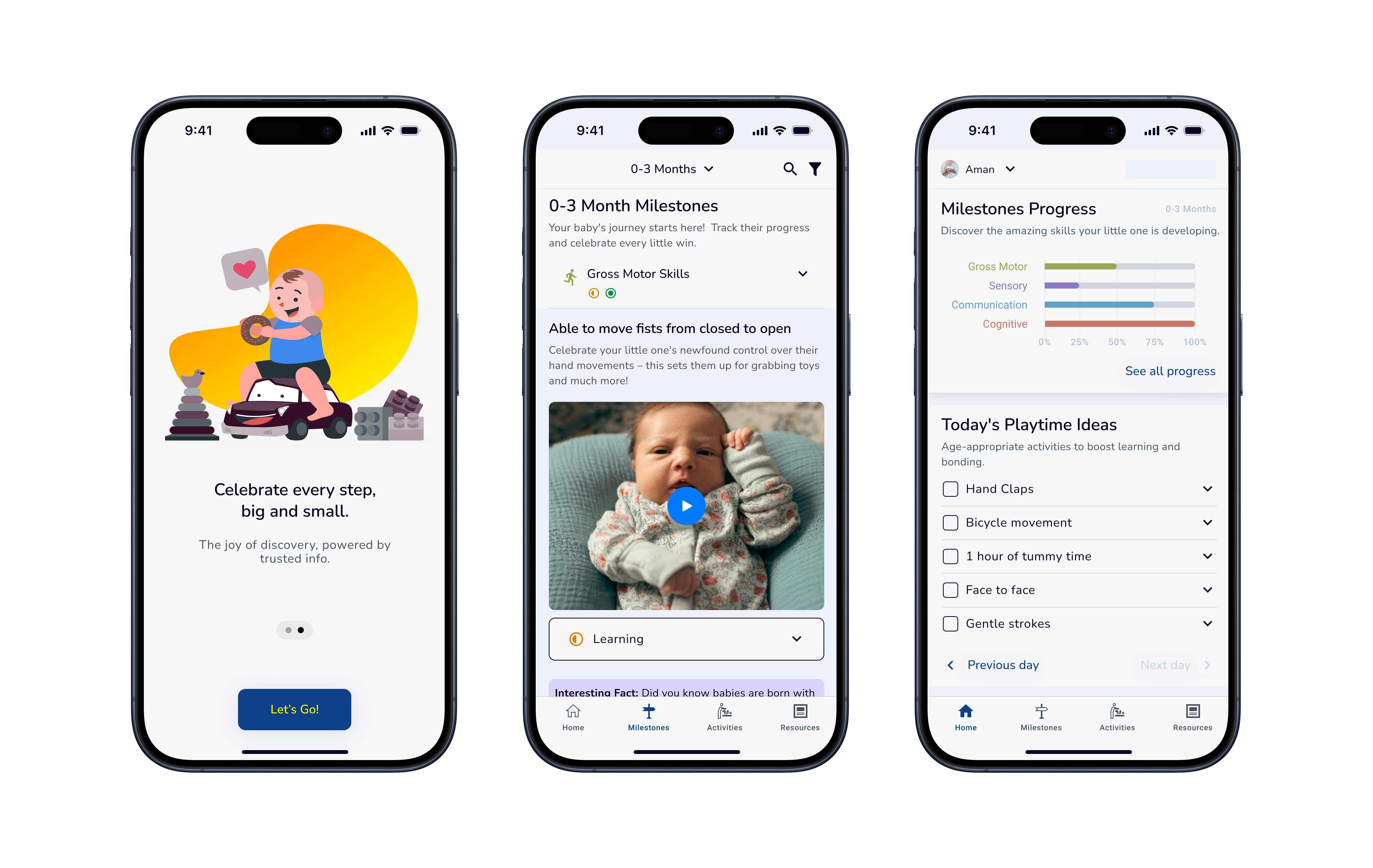
Research & Discovery
I have used different methods (qualitative and quantitative), to conduct the research and build a holistic understanding of the users and app usage.
Context: Parental Experiences
New parents often face an overwhelming amount of information about their baby's development. This storyboard illustrates that experience, highlighting the need for a simplified solution to track milestones and alleviate stress.

The Joyful Arrival
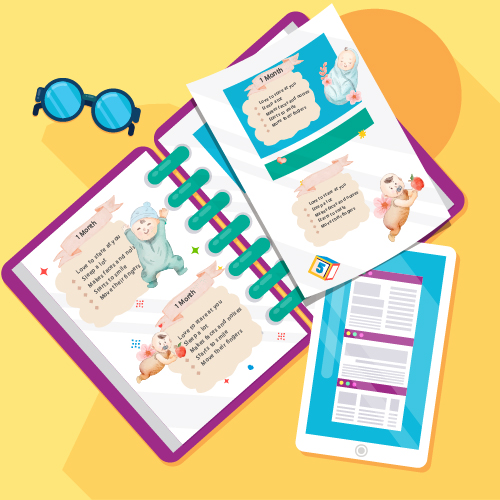
Milestones and Vaccinations

Lost in the Shuffle
Introduction: Things you need to know
A brief overview of key concepts that will help you understand the purpose and value of the Tiny Trails app.
Research shows early detection is important because 85% of brain development occurs before the child reaches the age of 5. Unfortunately, many children miss out on crucial early interventions due to late diagnosis.
Source: Infants and Toddlers With Autism Spectrum Disorder: Early Identification and Early Intervention
Parents are crucial partners in their child's development. Research shows that early intervention significantly benefits the entire family.
Source: Family Benefits of Early Intervention: A Scoping Review
Research suggests that the 18-36 month period is a time of extraordinary developmental leaps for children and a potential window for early identification of certain developmental differences or delays. Key areas governing language, social skills, and problem-solving undergo significant growth spurts during this time.
Secondary Research: Analyzing Journals &Published Research
My secondary research method involved collecting and analyzing published research on the subject. The goal was to make a generalized statement based on the findings of the primary research. The three key areas of research were:
User Interviews: Variations in Parental Awareness and Proactiveness
"Interviews revealed three distinct categories of parents based on their awareness of and actions regarding their child's development prior to diagnosis:..."
"It's striking how often even very well-informed parents second-guess themselves."
"I did wonder if he was a bit behind, but then my mom said I was a late talker too, so I tried not to worry."
”In the back of my mind, I worried a bit, but I wasn't sure if it was enough to see a doctor.”
"When I noticed she wasn't talking as much as other kids, I immediately started looking for information and made a doctor's appointment."
"...some families have strong beliefs about waiting for children to catch up naturally."
"Interviews revealed a pattern of reduced attentiveness towards developmental milestones in subsequent children. This often stemmed from assuming typical development based on experiences with older siblings."
"Interviews revealed a pattern of regression in some children – the loss of previously acquired skills – which significantly impacted the timing of diagnosis and intervention."
"... Interviews revealed a complex interplay between regional factors and access to healthcare in shaping parental awareness. While traditional beliefs and lack of resources often create barriers in developing regions, even in developed areas, awareness levels vary significantly."
"Interviews revealed a noticeable correlation between parents' education levels and their understanding of developmental milestones and potential red flags."
Insights: Few other high-level takeaways
Parents of children with developmental differences may be less aware of developmental milestones than parents of typically developing children, potentially leading to delayed interventions and impacting their child's long-term development.
Traditional beliefs and conflicting online information often led to parents delaying seeking help.
Competitor Analysis: Understanding the Landscape
Insights from the competitive analysis revealed a need for a milestone-tracking app that is both comprehensive and user-friendly.
To ensure the solution offers a unique and valuable experience, a comprehensive analysis of competitor apps was conducted.
This included four direct competitors in the baby development tracking space: BabySparks, Kinedu, The Wonder Weeks, and Pathways.org. Additionally, Baby+, a broader parental app, was examined to understand general trends in milestone tracking features.
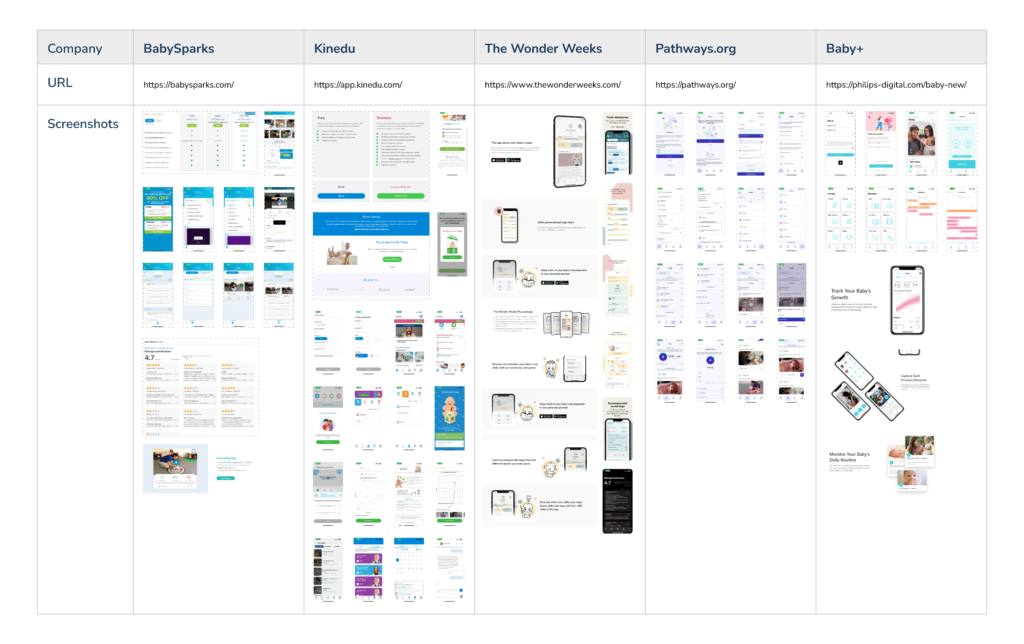
The main areas focus of the competitive analysis were:
- Milestone Tracking Functionality
- Content & Educational Resources
- Overall User Experience

Ideation and Strategy
Informed by user research, I developed distinct personas representing various parental needs and challenges. This section details the design strategy, information architecture, and how the experience was tailored to empower parents in their child's development.
Sarah, the anxious first-time parent, needs reassurance and clarity amidst information overload. The milestone tracking interface needs to prioritizes visual simplicity and integration of expert-verified 'what to expect' content.
Persona
Empathy Mapping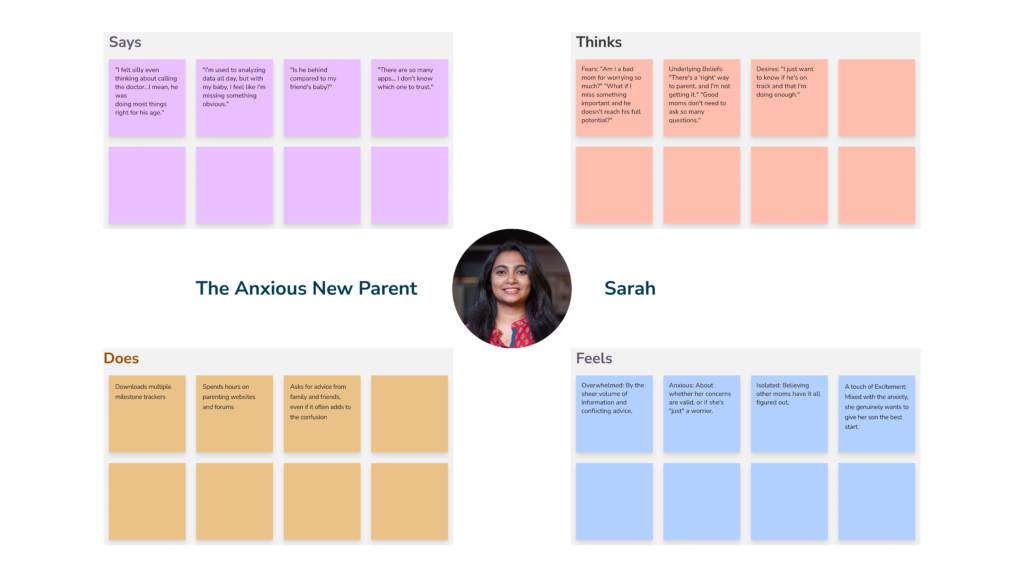
Maya, the time-strapped parent, benefits from quick-access progress summaries and push notifications tied to upcoming well-baby visits. This ensures she doesn't miss key milestones, even with limited time for in-depth app exploration.
Persona
Empathy Mapping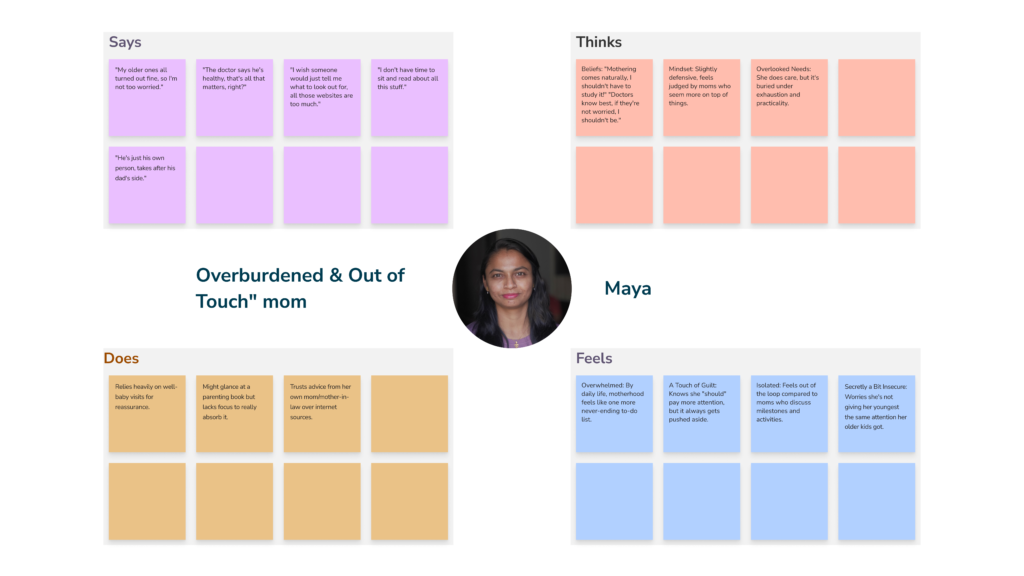
Alex finds information, but it's not actionable. He likely needs the option for more detailed note-taking, links to find specialists, etc.
Persona
Empathy Mapping: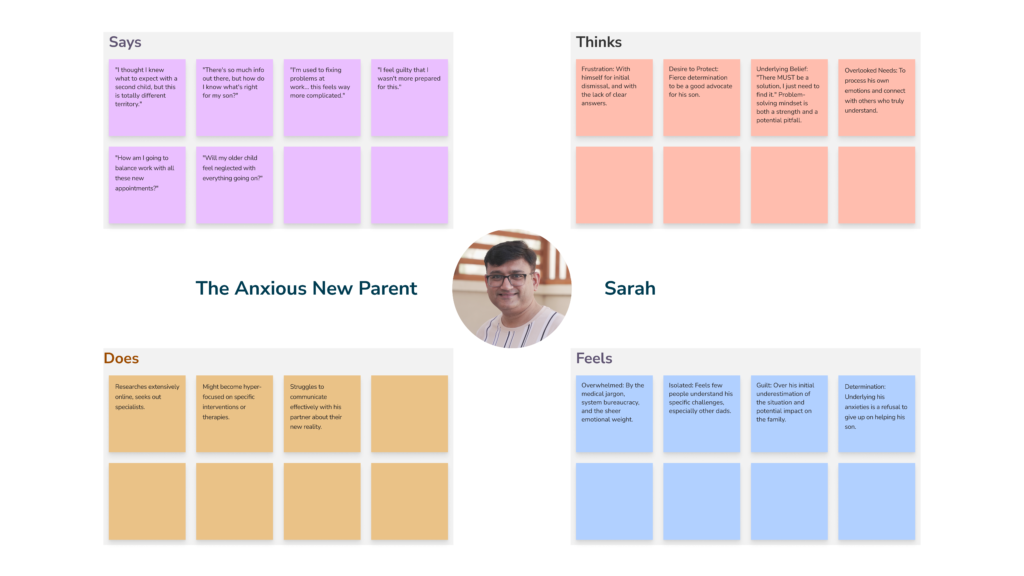
Persona & Empathy Mapping: Understanding the User
To ensure the solution delivers a truly user-centric experience, in-depth interviews were analyzed to create detailed personas and empathy maps.
These tools helped me understand the diverse needs, motivations, and pain points of parents, preventing solutions based on assumptions.
Information Architecture: Designing Intuitive Navigation
This allowed me to delve into the mental models of the target users, revealing their priorities, concerns, and preferred ways of organizing information.
These insights were instrumental in shaping the structure and functionality of the Tiny Trails app, ensuring that it aligns with the way parents naturally think about their child's growth and development.
Card sorting exercises revealed how parents categorize information about child development, helping us design the Tiny Trails app to align with their natural thought processes.
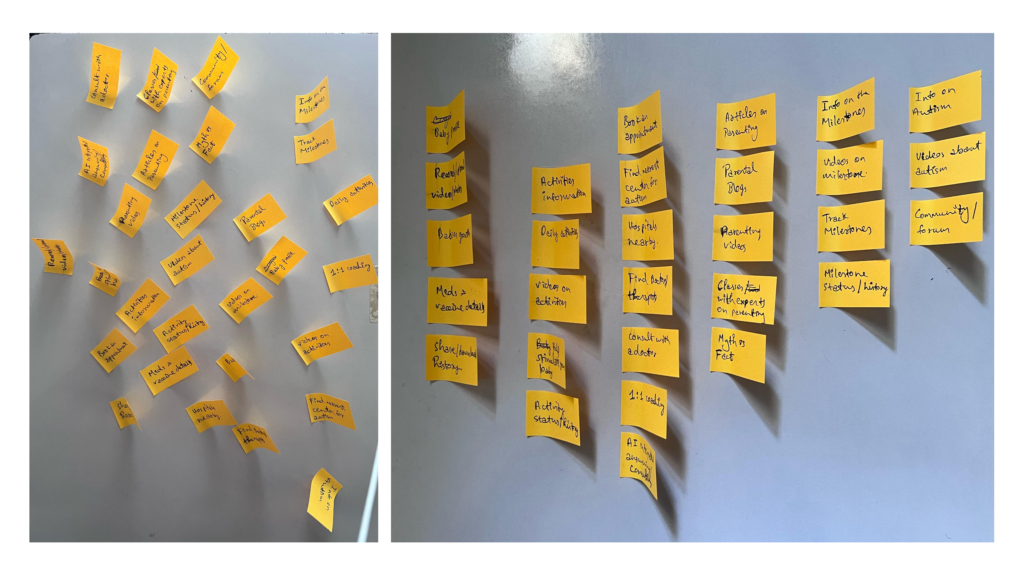
Card sorting insights informed the creation of a user-centric site map for the Tiny Trails app, ensuring intuitive navigation and easy access to information relevant to each stage of child development.

Site maps to wireflow: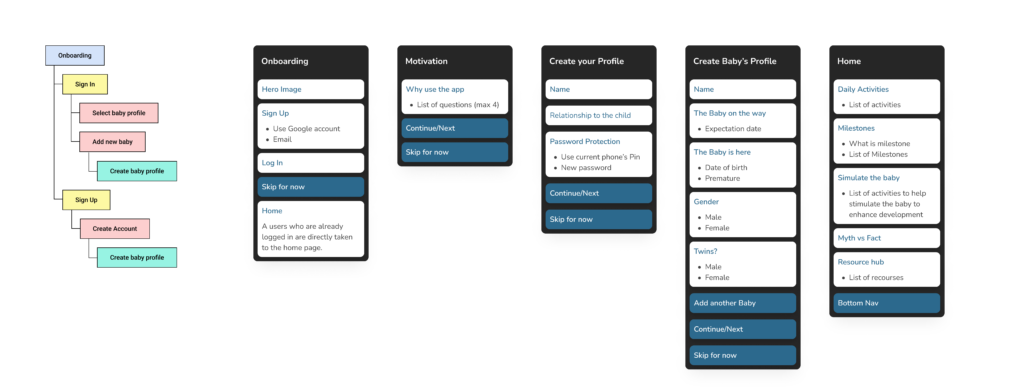
With a clear site map as our guide, we dove into creating wireframes for the Tiny Trails app. These visual blueprints allowed us to map out the user flow, ensuring seamless navigation and an intuitive experience for parents as they explore the app's features.

Wireframing And Prototyping
With a clear site map as my guide, I dove into creating wireframes for the Tiny Trails app. These visual blueprints allowed me to map out the user flow, ensuring seamless navigation and an intuitive experience for parents as they explore the app's features.
Onboarding Experience
Welcoming New Parents: A Seamless Onboarding Journey
Showcases a user-friendly onboarding flow that guides new parents through the Tiny Trails app with clear instructions and engaging visuals. The focus is on creating a positive first impression and setting the stage for a smooth user experience.
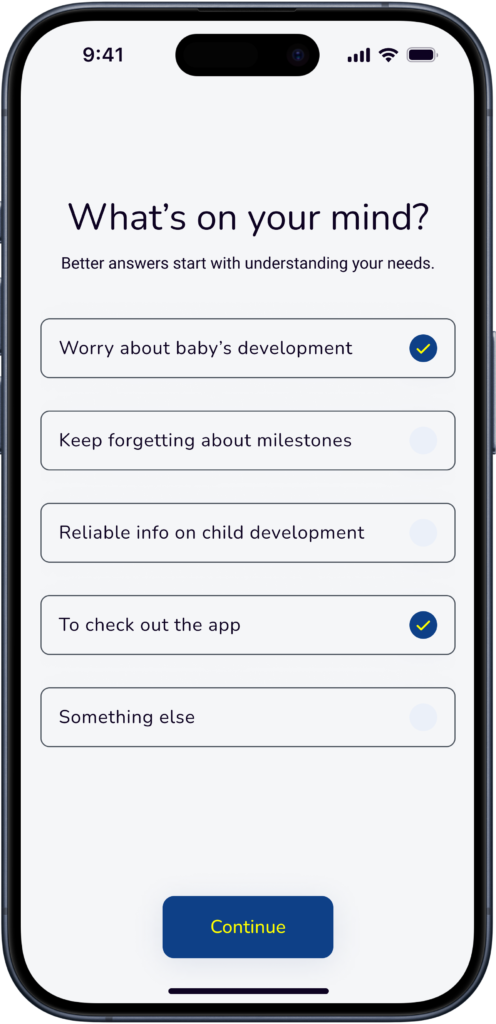
open-ended question to understand the user for a personalized experience
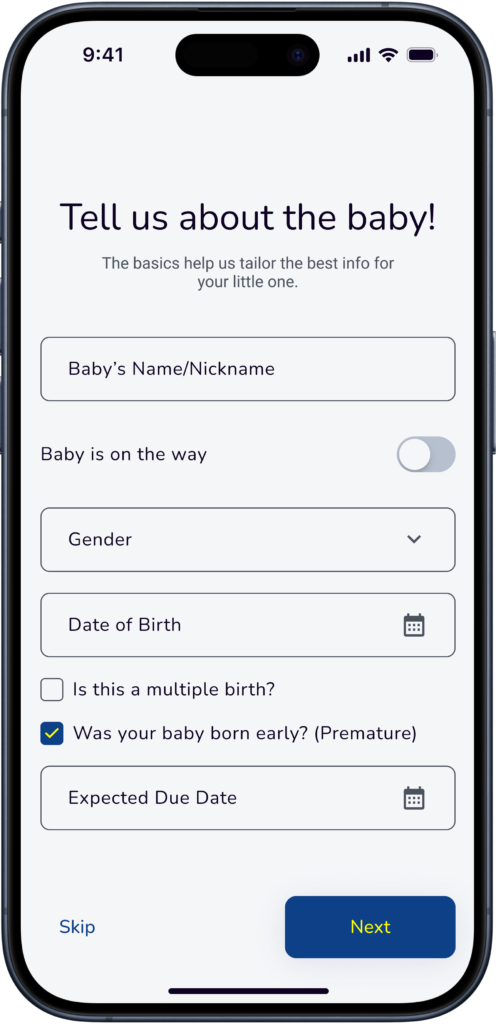
easy options to tailor age-appropriate milestones and activities.
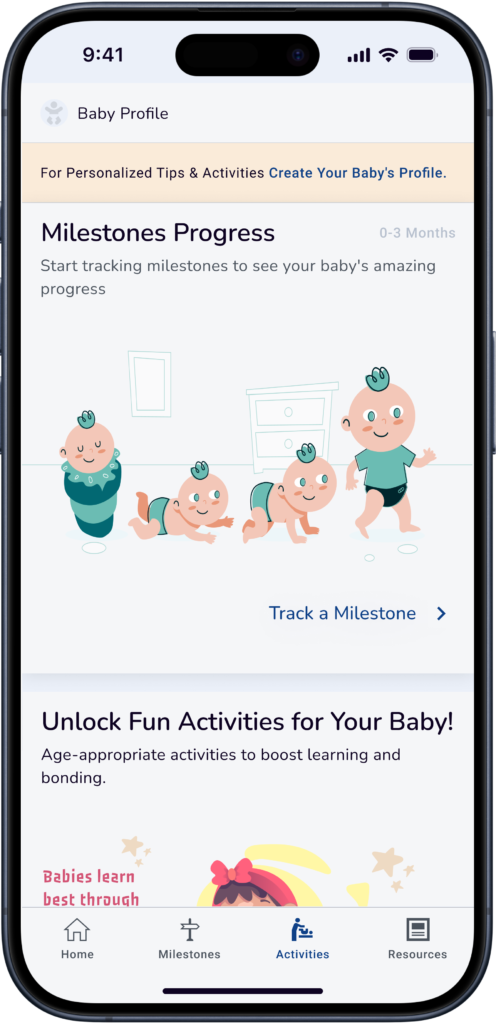
Visually Engaging Landing Page with clear calls to action, for a positive first impression
Milestone Tracking
Empowering Parents: Intuitive Milestone Tracking and Visualization
Demonstrates the app's streamlined milestone tracking functionality. It highlights how parents can easily record their child's developmental progress, access personalized insights, and visualize their child's growth over time. The intuitive interface aims to make milestone tracking effortless and rewarding.

The clear heading emphasizes the milestone being focused on, while the accompanying video offers visual demonstrations

a concise overview of all milestones within a selected age range showing the number of sub-milestones it contains along with their status.

clear and intuitive options to update their child's progress on a specific milestone. This simplified approach minimizes cognitive load and encourages consistent use of the app.
Activity Suggestions
Engaging and Educational: Curated Activities for Every Stage
Showcases the app's personalized activity suggestions feature. It demonstrates how parents can discover age-appropriate activities tailored to their child's developmental needs, fostering engagement and learning. The emphasis is on providing valuable resources to support parents in nurturing their child's development.
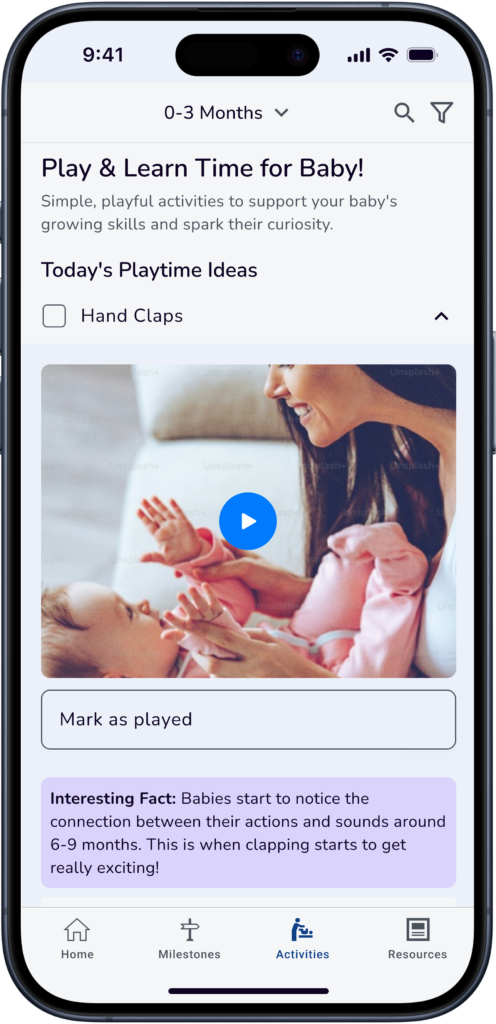
The clear heading and collapsed information hierarchy ensure quick comprehension with Detailed Instructions & Visual Demonstration promotes user interaction and progress tracking
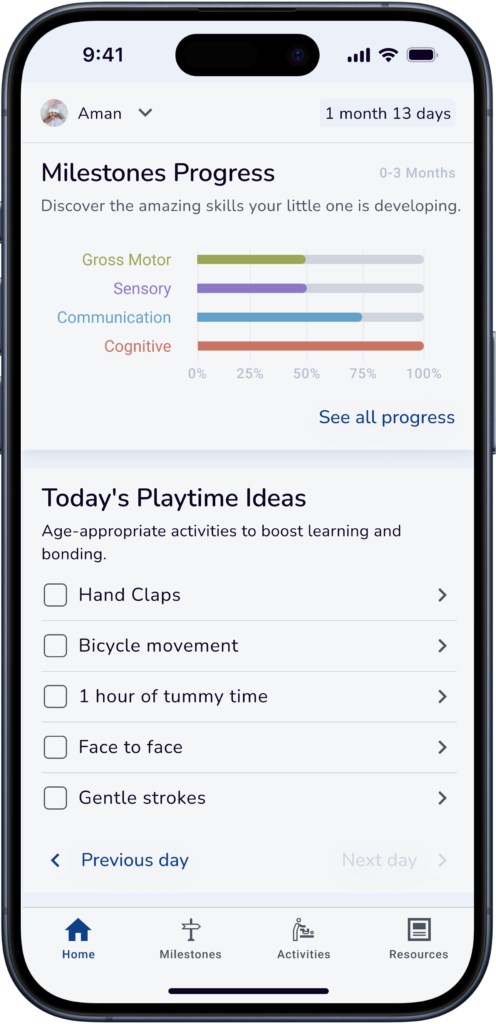
activity suggestions integrated directly into the landing page for easy and Quick Access to Daily and Past Activities reinforcing the importance of ongoing engagement and progress tracking.

a comprehensive list of all available activities, categorized and collapsible for easy navigation. The use of checked boxes visually indicates completed activities, providing a sense of accomplishment
Filtering and Navigation
Effortless Exploration: Intuitive Filtering and Navigation Tools
Highlights the app's filtering and navigation features, designed to help parents quickly find the information and resources they need. By incorporating intuitive filtering options and a clear navigation structure, to enhance the overall user experience and to make it easy for parents to access relevant content.
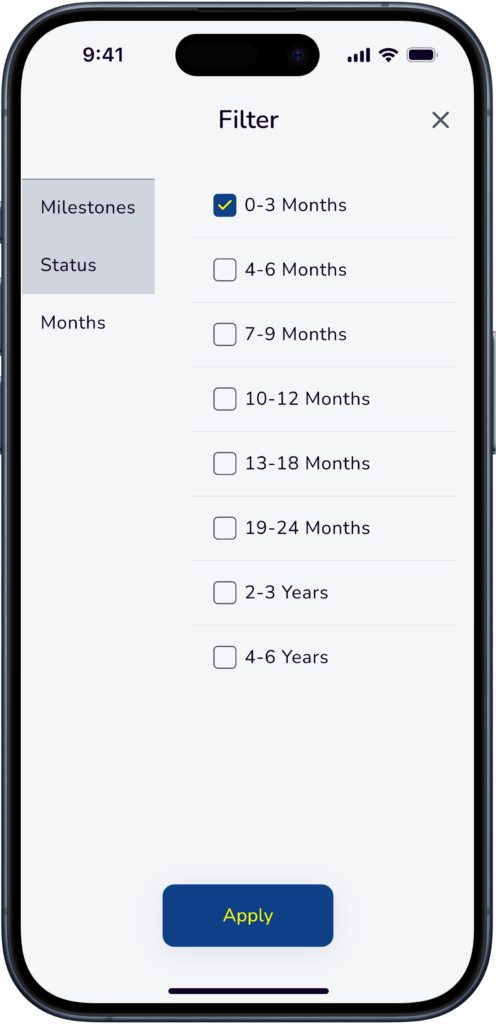
Simplifying Discovery with a streamlined filtering system designed to empower parents to quickly find relevant milestones ensures effortless navigation and customization.

Filtered Milestone View with Boost Activities displays the filtered results of milestones yet to be completed, along with a prominent "Boost Activities" option under each milestone
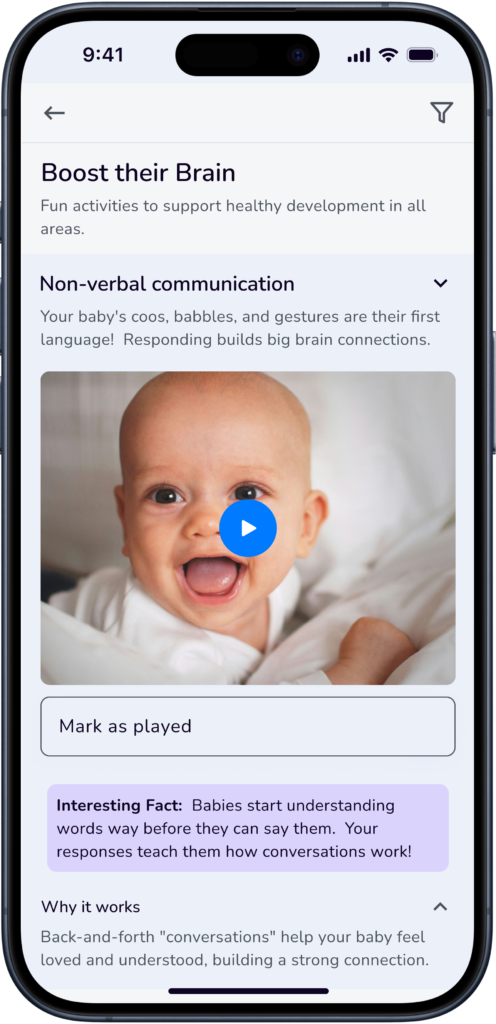
This feature guides parents towards targeted activities designed to specifically support their child's progress in a particular area of development
The Road Ahead: Expanding Tiny Trails' Impact
By addressing some of the below areas, Tiny Trails can evolve into a comprehensive and indispensable tool for parents navigating the complexities of child development.
Thank You




